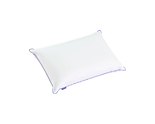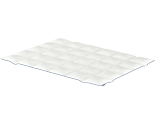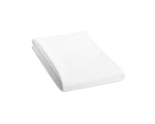If you have lived in India for the last few years, you would have noticed that our summers and winters have become much colder. So, when we started designing India's most comfortable mattress, one of our over-arching requirements was to make a weatherproof mattress.
That put us on the journey to test out different materials. Here's how different types of mattresses fared:
- Memory foam mattresses - Memory foam is one of the most popular bed raw materials. However, there are pros and cons. It is cheaper compared to Latex and offers good orthopaedic support. However, there are complaints that it tends to heat up during summer. We found that an excellent way to mitigate this is to use memory foam as a middle layer instead of a top layer. This is something that we have done with our Ortho Latex 4 mattress.
- PU foam mattresses - PU foam mattresses are the first cousins of memory foam mattresses. The ingredients for making memory foam and PU foam overlap more than 90%. However, it makes for good base material (to be used in the lower layers) as it is lightweight, has a good life and is more affordable. We used this to build our amazing Ortho Latex 4 Mattress.
- Rubberised Coir mattresses - These have been the favourite mattresses for South Indians for a good reason. However, the world has moved on since the time of coir mattresses by a few miles! Coir mattresses are good mattresses for back support. However, they have a brief lifespan. Most coir mattresses start to sag heavily within 2-3 years of usage and hence do not make for a good investment.
- Bonnell & Pocket Spring mattresses - There is no impact on the choice of a spring mattress from a weather point of view. In general, metal messes up your energy flow, so we do not recommend this. Even from a practical point of view, spring mattresses have a shorter life span compared to foam mattresses
- Latex foam mattresses - This was our undisputedly favourite material for bed use. It conducted heat very well, meaning the mattress did not heat up or become ice cold when the weather changed. The only downside is that it is the most expensive raw material out there (barring the mattresses made of gold or horse hair etc.), and producing good quality foam requires expertise and machinery. We addressed this by cutting out intermediaries to save costs and importing the best latex foam to retain the best quality.
We have no incentive to promote one material over the other, but latex-based mattresses trump other mattresses significantly.
We would love your feedback or comments below. If you have any specific questions, please feel free to ask; our in-house mattress expert will answer them.













 By Chirag Patel
By Chirag Patel



Comments